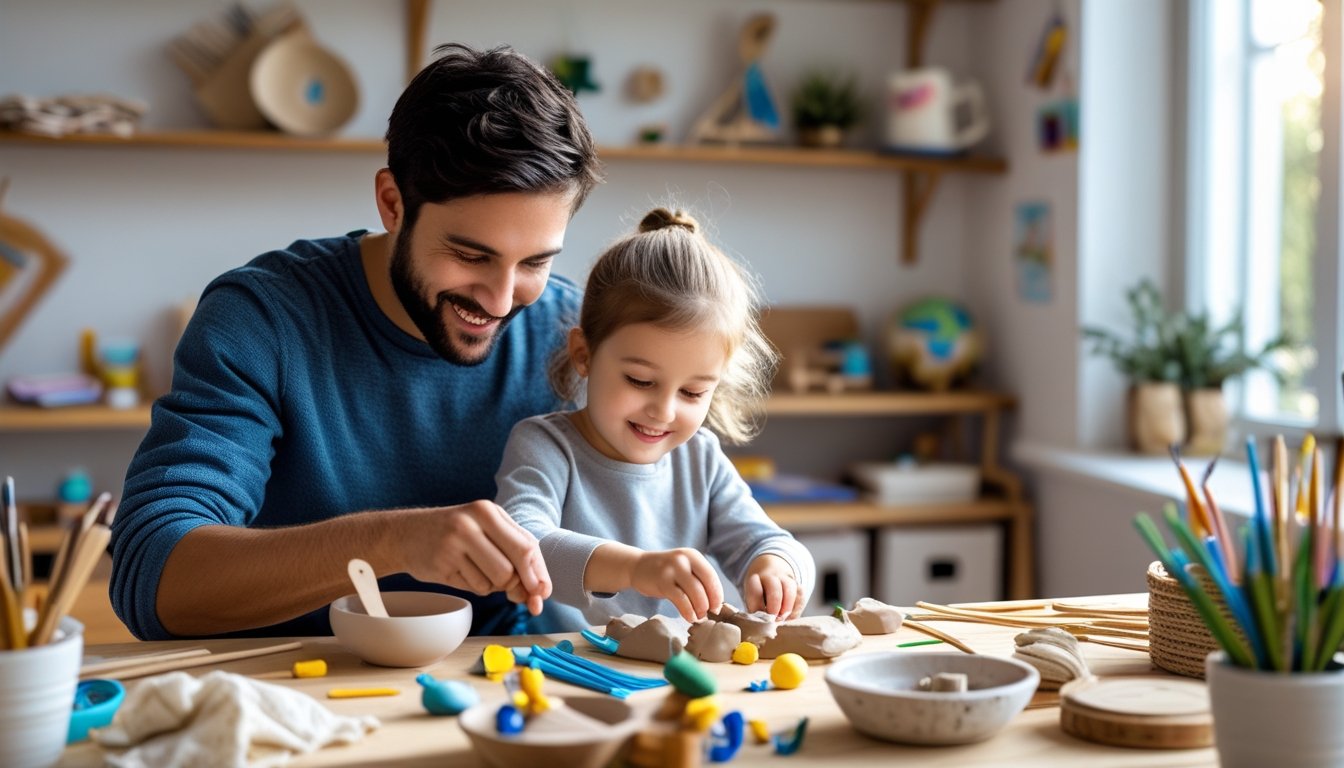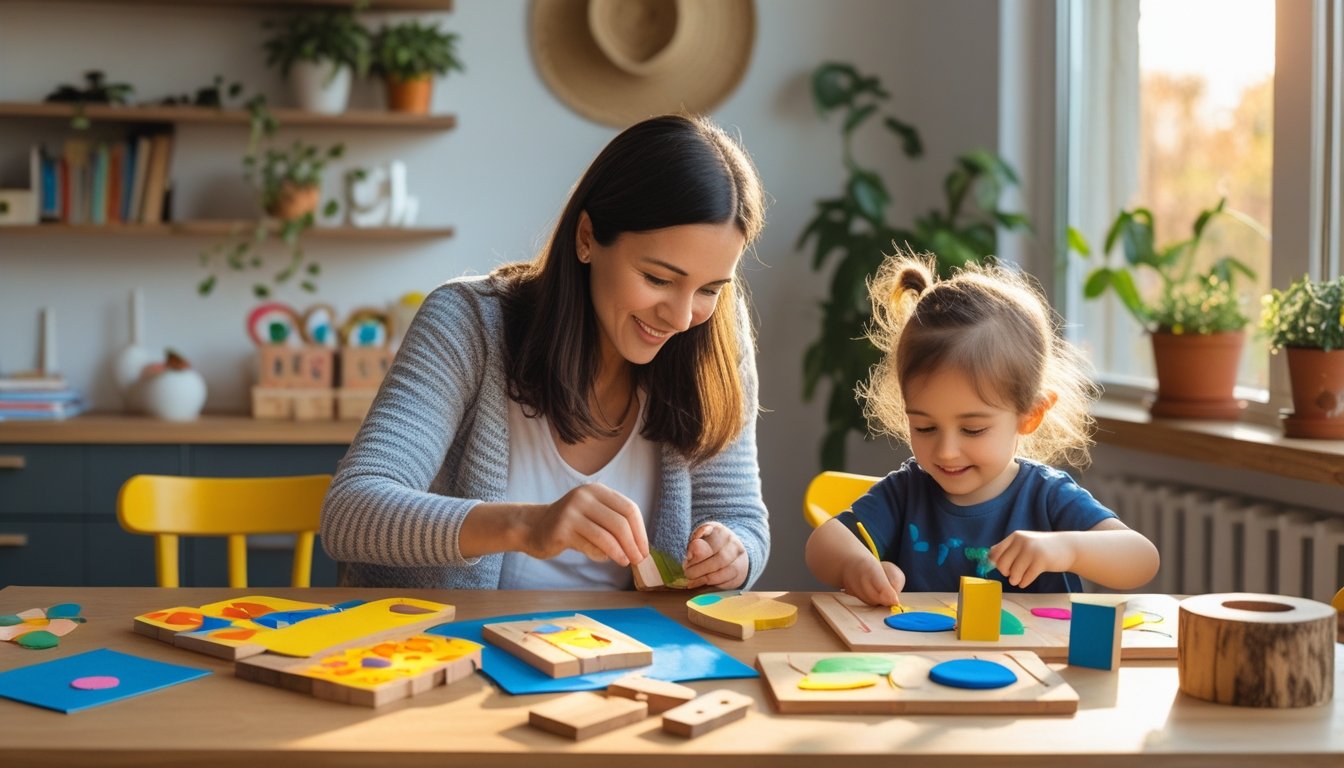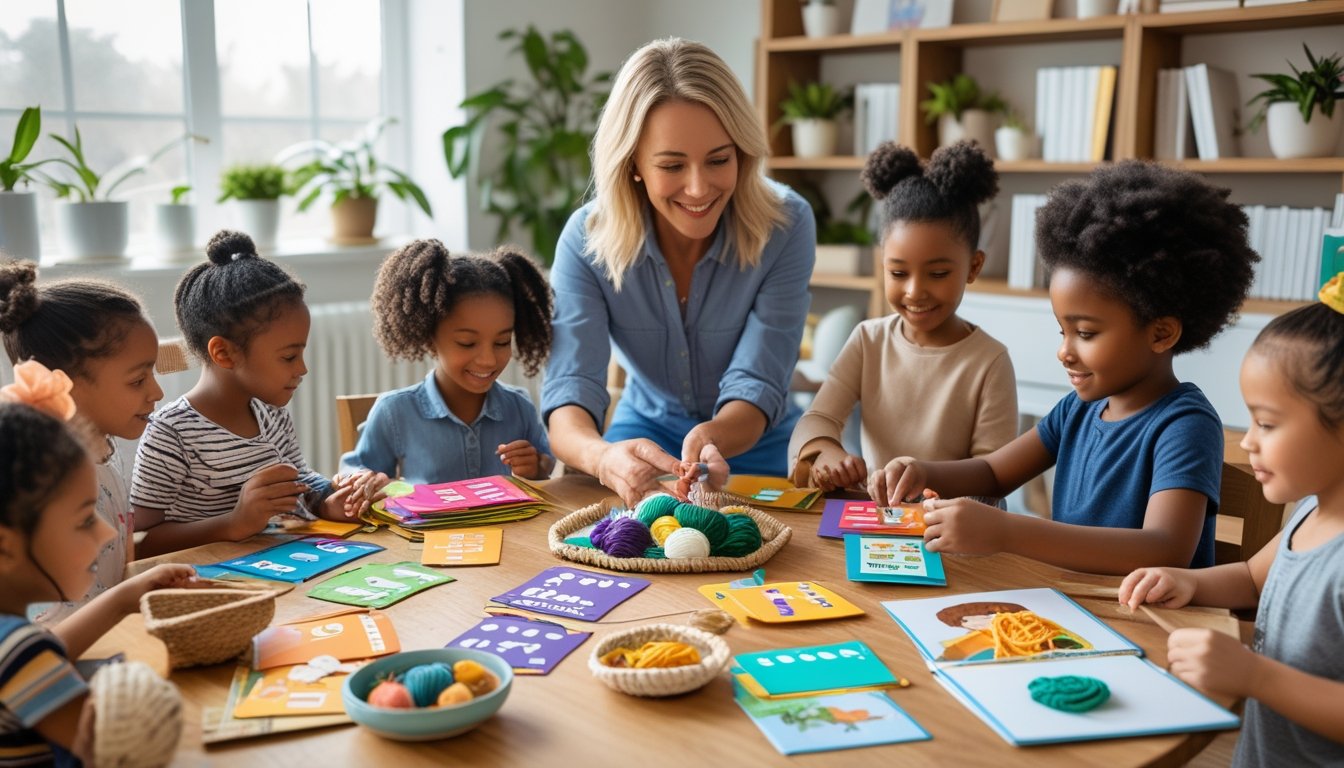Late updated: 16 Oct 2025 15:10
Written by:
Artisanal Teaching Techniques For Home Learning: Enhancing Educational Effectiveness
Exploring new ways to enhance our children's education in a home learning environment can be both exciting and challenging. In recent years, "artisanal teaching" has emerged as a popular method for creating enriching and effective learning experiences. The core of artisanal teaching rests on customised learning techniques that respect and respond to each child's individual needs and talents. With this approach, we can craft a more personal and impactful educational journey.

Artisanal teaching emphasises collaboration, adaptability, and creativity. It allows us to build supportive learning environments where children feel encouraged to explore and grow. By focusing on flexibility and hands-on experiences, this method not only caters to varied learning styles but also cultivates essential skills for future success. Integrating artisanal techniques into home education means striking a balance between traditional and innovative practices, benefiting our children both academically and personally.
Our journey into artisanal teaching techniques unveils practical strategies to enhance home learning. From creating bespoke learning plans to tapping into local resources, these methods nurture a thriving home education ecosystem. As we delve into this approach, we invite you to explore how it may transform your children’s educational experience.
Key Takeaways
- Artisanal teaching customises learning for each child's needs.
- It fosters a supportive, creative learning environment.
- It balances traditional and innovative educational methods.
Fundamentals of Artisanal Teaching for Home Learners

Artisanal teaching techniques bring together creative expression and practical skills, offering a unique approach to home learning. Embracing hands-on activities, this method utilises traditional crafts to enrich the education experience, making learning engaging and valuable.
Defining Artisanal Teaching Techniques
Artisanal teaching involves blending creativity with practicality, aiming to provide a comprehensive learning experience. This approach is rooted in traditional craftsmanship, focusing on developing skills through hands-on activities. By integrating artistic expression with educational content, learners gain deeper insights into subjects.
In our approach, we focus on cultivating a learning environment where each task becomes a miniature project. This involves not just understanding topics theoretically, but applying them practically. By working with diverse materials and methods, students learn to appreciate the discipline involved in crafting, while simultaneously gaining educational knowledge.
Key Principles of Hands-On Home Learning
The essence of hands-on home learning lies in active participation and engagement. We must encourage students to explore through practice, allowing their curiosity to guide their learning processes. It's important to create an environment where mistakes are viewed as integral to the learning journey.
By emphasising collaboration and independent exploration, learners develop critical problem-solving skills. We encourage exploratory learning through activities like model building and experiments, fostering critical thinking. Teaching methodologies must be adapted to student needs, allowing them to pursue interests while covering curriculum essentials. Flexibility and adaptability are key to this teaching approach.
Integrating Craft and Traditional Techniques
Incorporating craft into education offers valuable real-world skills. By utilising traditional methods, students gain practical experience and historical perspective. We incorporate techniques such as weaving or woodworking, connecting past practices with contemporary learning. These techniques encourage patience, precision, and creativity, providing a multifaceted educational perspective.
Ethical and sustainable practices are central, teaching students the responsibility of resource use. By creating a direct connection between theoretical knowledge and tangible outcomes, crafting promotes a deeper understanding and retention of information. We strive to build a curriculum that values both historical significance and modern applicability.
Creating and Adapting a Lesson Plan
Designing an artisanal lesson plan requires a balance between structure and flexibility. Plans should include clear objectives and outcomes, specifying the skills and knowledge to be gained. It’s imperative to tailor lessons to suit diverse learning styles and paces. Customisation plays a crucial role.
Incorporating both guided activities and self-directed projects ensures comprehensive learning. We often integrate cross-disciplinary themes, linking subjects like mathematics with art through pattern creation or measurement exercises. Evaluations should focus on process and effort, not just the final product, maintaining an encouraging and supportive environment.
Implementing Artisanal Approaches in Home Education

To effectively incorporate artisanal teaching techniques into home education, we must focus on selecting authentic materials and tools, designing activities that build essential skills, and fostering a learning environment that encourages self-direction and hands-on experiences. These aspects are crucial for nurturing creativity and practical knowledge in home learners.
Selecting Authentic Materials and Tools
Choosing the right materials and tools is paramount to replicating the authenticity of traditional artisanal crafts in home education. We look for materials that are both safe and similar to what professional artisans use. For instance, for weaving, we might choose natural fibres like wool or cotton. For pottery, using clay instead of synthetic alternatives provides a more genuine experience.
When selecting tools, it is essential to ensure they are age-appropriate and safe for students to handle. Simple tools, such as knitting needles or small looms, can offer a practical yet effective introduction to craftwork. Online resources and local workshops often provide kits tailored for different age groups and skill levels, making it easier to get started with minimal investment.
Designing Skill-Building Activities
Skill-building activities should be purposefully crafted to enhance both creativity and technical proficiency. We can design projects that align with both the learner's interests and the skills traditionally associated with specific crafts.
For instance, a beginner woodworking project might involve creating a simple birdhouse, teaching learners to measure, cut, and assemble pieces accurately. Through this, they gain hands-on experience with tools like hammers and nails. Similarly, a self-designed textile project, where learners can choose their patterns and colours, encourages both innovation and practical application of sewing techniques.
These activities not only impart specific craft skills but also build broader abilities such as problem-solving, planning, and fine motor coordination.
Encouraging Self-Directed and Experiential Learning
Self-directed and experiential learning are at the heart of the artisanal approach. We want learners to take charge of their projects, selecting tasks and setting their goals. This autonomy fosters confidence and a sense of responsibility for their educational journey.
We can encourage learners to maintain a journal or portfolio documenting their projects, which helps in reflecting on their progress and challenges. By participating in local fairs, or showcasing their work online, learners can gain feedback and inspiration.
Experiential learning goes beyond the home environment. Visiting local artisans or participating in virtual workshops allows learners to gain different perspectives, understand the craftsmanship better, and appreciate the effort involved.
Frequently Asked Questions

In a home education setting, artisanal teaching techniques offer unique opportunities for personalised, hands-on learning that can effectively engage children and nurture their creativity. These methods integrate practical skills with academic learning, promoting both cognitive and sensory development.
What are the core principles of artisanal teaching methods in a home education environment?
Artisanal teaching in a home setting emphasises hands-on learning, creativity, and individualised instruction. It focuses on teaching fundamental skills through practical activities, allowing children to explore subjects in depth at their own pace. Encouraging curiosity is key, as is adapting lessons to align with a child’s interests.
How can one effectively integrate craft-based learning into a child's daily home schooling routine?
To weave craft-based learning into daily schedules, simplicity and consistency are crucial. Begin with relatable projects that tie into current academic topics, ensuring activities are both enjoyable and educational. Regular crafting time helps solidify these sessions as a fundamental part of the child’s learning routine.
What strategies can parents adopt to assess the progress of their children following artisanal teaching approaches?
Progress can be gauged by observing a child’s growing proficiency in skills and crafts. Rather than standard tests, we suggest using portfolios showcasing completed projects. Additionally, having regular discussions with the child about their work helps to reflect on their learning journey.
In what ways can tactile and hands-on experiences enhance the learning outcomes for students at home?
Hands-on activities enhance retention by engaging multiple senses, making concepts tangible and relatable. Crafting allows children to apply theoretical knowledge practically, deepening their grasp of complex ideas. These experiences cultivate problem-solving skills and boost creativity, leading to a more substantive learning experience.
Can artisanal teaching techniques be adapted for different age groups, and how might they vary?
Yes, these methods are adaptable across age groups. For younger children, focus on simple activities to develop motor skills and basic understanding. For older students, introduce more complex projects that challenge their skills and promote critical thinking. Tailor activities to suit developmental stages and interests.
What resources are most beneficial for parents looking to implement artisanal teaching tactics in home education?
Resources that support artisanal home education include crafting materials, instructional books, online tutorials, and community workshops. Joining local artisan groups can provide valuable guidance. Ensuring access to a variety of materials lets children experiment, enhancing their learning and encouraging exploration of different crafts.
